
Enschede is a city and municipality in the province of Overijssel and the Twente region of the eastern Netherlands. The east of the urban area reaches the border of the German city of Gronau.

Culemborg is a municipality and a city in the centre of the Netherlands, in the province of Gelderland. The city had a population of 29,386 on 1 January 2022 and is situated just south of the Lek river. Direct train lines run from the railway station towards the cities of Utrecht and Den Bosch, via the near railway bridge.
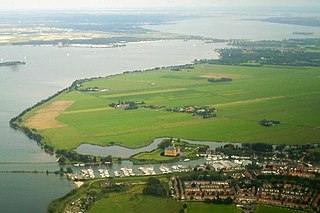
Muiden is a city and former municipality in the Netherlands, in the province of North Holland. It lies at the mouth of the Vecht and is in an area called the Vechtstreek. Since 2016, Muiden has been part of the new municipality of Gooise Meren.
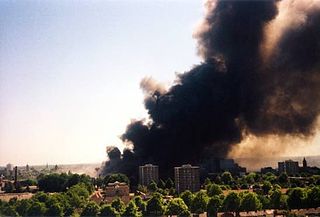
The Enschede fireworks disaster was a catastrophic fireworks explosion on 13 May 2000 in Enschede, Netherlands. The explosion killed 23 people including four firefighters and injured 950 others. A total of 400 homes were destroyed and 1,500 buildings were subsequently damaged.

Nederlandse Organisatie voor Toegepast Natuurwetenschappelijk Onderzoek is an independent statutory research organization in the Netherlands that focuses on applied science. It conducts contract research, offers specialist consulting services, and grants licenses for patents and specialist software. TNO also sets up new companies to market innovations.

On May 4, 1988, a fire followed by several explosions occurred at the Pacific Engineering and Production Company of Nevada (PEPCON) chemical plant in Henderson, Nevada. The disaster caused two fatalities, 372 injuries, and an estimated $100 million of damage. A large portion of the Las Vegas Valley within a 10-mile (16 km) radius of the plant was affected and several agencies activated disaster plans.
The Bright Sparklers fireworks disaster occurred in Sungai Buloh, Selangor, Malaysia on 7 May 1991 at 3:45 (MST). The Bright Sparklers fireworks factory in Sungai Buloh, Selangor caught fire and caused a huge explosion. Twenty six people were killed and over a hundred people were injured in the disaster. The explosion was strong enough to rip off the roofs of some local houses, and ended up damaging over 200 residential properties and was felt as far as 7-8 kilometers from the side.
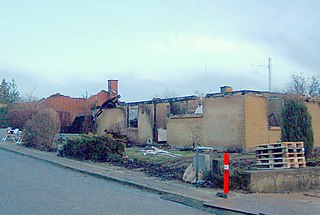
The fireworks accident in Seest was a disaster that occurred on 3 November 2004, when the N. P. Johnsens Fyrværkerifabrik fireworks warehouse exploded in Seest, a suburb of Kolding, Denmark. One firefighter died; seven from the rescue team as well as 17 locals were injured. In addition 34 rescuers, 8 police officers, and 27 from the Danish Emergency Management Agency were treated for smoke inhalation. The evacuation of 2,000 people from the immediate surrounding area saved many lives. Eight fire and rescue vehicles were also destroyed.
Dalem is a village in the Tielerwaard region in the municipality of Gorinchem, in the Dutch province of South Holland. The village belonged to the province of Gelderland until 1986 and was part of the former municipality of Vuren. Until January 1, 1818, Dalem was the name of the municipality, which was then renamed Vuren.

Roombeek is a working-class suburb of the Dutch city of Enschede. It made international headlines due to the Enschede fireworks warehouse disaster on 13 May 2000. The warehouse explosion in Roombeek caused 23 deaths, and wounded 947 people. Around 400 homes were destroyed, and 1,500 were seriously damaged by the fireworks explosion.
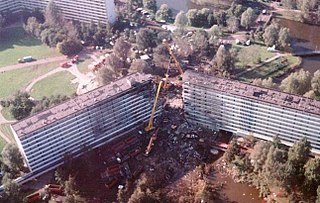
On 4 October 1992, El Al Flight 1862, a Boeing 747 cargo aircraft of the Israeli airline El Al, crashed into the Groeneveen and Klein-Kruitberg flats in the Bijlmermeer neighbourhood of Amsterdam, the Netherlands. The accident is known in Dutch as the Bijlmerramp.
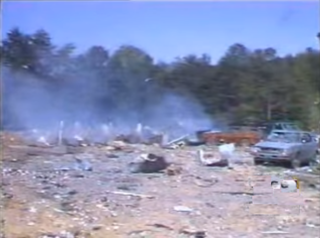
The Benton fireworks disaster was an industrial disaster that occurred on May 27, 1983, on a farm near Benton, Tennessee. A powerful explosion at an unlicensed fireworks factory producing illegal fireworks killed eleven and injured one, revealing the existence of the factory for the first time to law enforcement and the public. The initial explosion was heard more than 20 mi (32 km) away.

On 10 April 2016 at approximately 03:30 AM IST, the Puttingal Temple in Paravur, Kollam, Kerala, India, experienced a fireworks accident after firework celebrations went awry. As a result, 111 people were killed and more than 350 were injured, including some with severe burns. The temple and at least 150 houses in the area of the temple were damaged by the blast. According to local reports and eyewitnesses, the explosion and fire were caused by sparks from a firecracker being used in a competitive fireworks display igniting fireworks in a concrete storehouse. About 15,000 pilgrims were visiting the temple to mark local Hindu celebrations during the last day of a seven-day festival of the goddess Bhadrakali.
The Tangerang fireworks disaster occurred on 26 October 2017 at the PT. Panca Buana Cahaya Sukses, a fireworks manufacturing factory in Kosambi, Tangerang, Indonesia. The explosion occurred in a warehouse connected to the factory and ignited a large fire. A total of 103 people were working at the factory at the time of the explosion. At least 49 people were killed and 46 others were injured in the fireworks accident. Authorities confirmed that several people were still missing. It was the deadliest industrial accident in Indonesia.
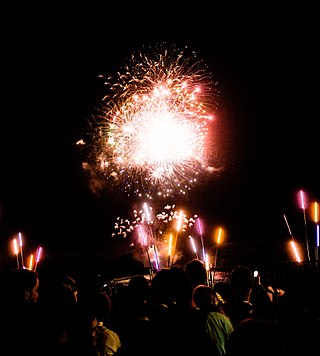
Fireworks policy in the European Union is aimed at harmonising and standardising the EU member states' policies on the regulation of production, transportation, sale, consumption and overall safety of fireworks across the European Union. Regulation is achieved via Directive 2013/29/EU on the harmonisation of the laws of the Member States relating to the making available on the market of pyrotechnic articles.

Fireworks in the Netherlands are mostly regulated by the Vuurwerkbesluit, a 1993 law that has subsequently been amended many times to make the rules surrounding the production, testing, transportation, storage, trade, sale, consumption and overall safety of fireworks stricter.
Events in the year 1991 in the Netherlands.

On 20 January 2022, a large explosion occurred along the Tarkwa-Bogoso-Ayamfuri road in Western Region, Ghana, after a truck transporting mining explosives collided with a motorcycle. The explosion levelled the nearby Apiate village, killing 13 people and injuring 200.















